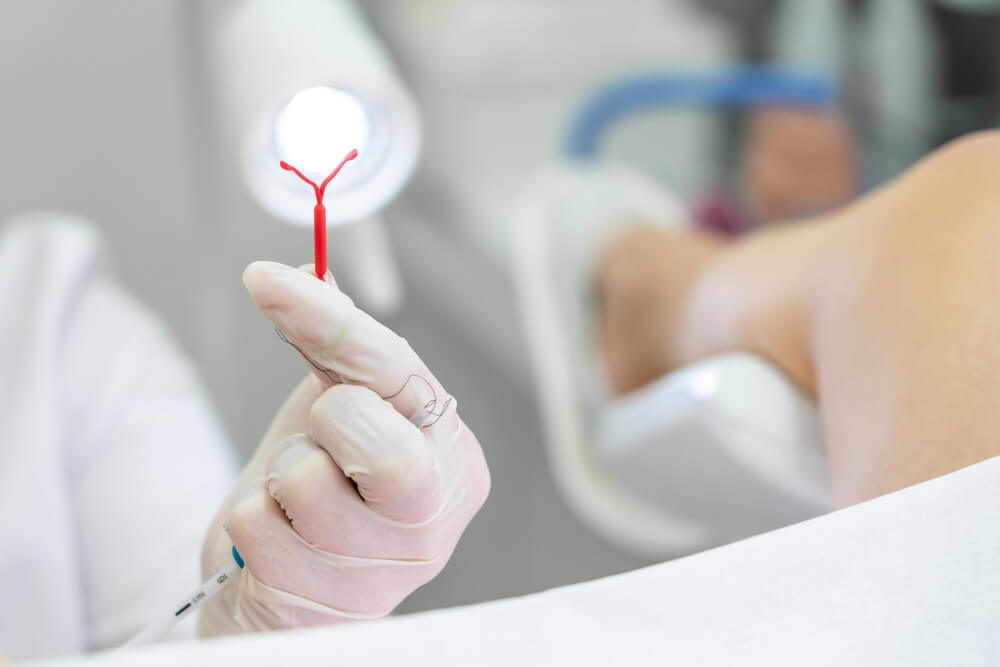Mirena is a hormonal IUD (intrauterine device) that essentially acts as birth control and prevents pregnancy. Among different types of hormonal IUD, Mirena is also the progesterone IUD as it releases progestin (synthetic hormone designed to mimic progesterone) that then thins the uterine lining to minimize ovulation and thickens cervical mucus to prevent conception. The Mirena IUD looks like a small piece of plastic in the shape of a letter T, and a gynecologist inserts it into the uterus. It then provides pregnancy protection for up to five years. If you’re interested in getting a hormonal IUD as a contraceptive solution, feel free to use expert gynecological services in Sarasota, FL. After the checkup, the doctor will discuss different types of hormonal IUDs with you and go over your best options.
What Are the Types of Hormonal IUD?
When hormonal IUD is concerned, women have four options in the US, namely Mirena, Liletta, Kyleena, and Skyla. They are all progesterone IUD types that release progestin for pregnancy prevention. However, depending on what IUD you choose, you can expect different lengths of contraception benefits. For instance, Mirena and Liletta will provide birth control for around five years and sometimes even longer. Kyleena is known to work for up to five years, while Skyla is an effective contraceptive method for up to three years.
Of course, even if you have a hormonal IUD inserted, you don’t have to wait for years to take it out and consider the possibility of pregnancy. If, at any point of having a working IUD, you decide that you wish to conceive, you can simply go to your gynecologist to have the IUD taken out. And in case you want to keep using one as birth control, you just have to go to the clinic to have it replaced.

How Do Hormonal IUDs Work?
As mentioned, a hormonal IUD is a small piece of T-shaped plastic that gets inserted into the uterus. So, how do hormonal IUDs work? The progesterone IUD basically releases synthetic progesterone hormone called progestin gradually over the course of a couple of years, which doesn’t allow for conception to occur. This particular hormone makes the mucus in the cervix thicker so that it obstructs the sperm from reaching the egg. It also makes the lining of the uterus thinner, which partly leads to ovulation suppression. It’s also worth noting that hormonal IUDs can minimize the heavy menstrual flow and painful cramping during the period.
Now that it’s clear how hormonal IUDs work, you should also be aware that they work exceptionally well while they’re inserted and release hormones. Actually, an IUD is considered to be the most effective form of birth control available today. But the best thing about them is that they can be removed whenever, which almost immediately returns your fertility to what was normal for you before insertion.
The Benefits of a Hormonal IUD
As we discussed earlier, aside from birth control benefits, Mirena and other hormonal IUDs are an excellent solution for people who generally have some period issues. That said, people who experience really heavy bleeding or severe cramping when on period can expect their periods to get lighter and pain to subside. Moreover, some women reported that their periods completely stopped after inserting Mirena. Also, the hormonal aspect of Mirena can help with minimizing the symptoms of other gynecological problems such as PCOS and endometriosis.
Another great benefit of a hormonal IUD is the fact that it’s a simple and convenient contraceptive method. There’s no need to worry about taking oral contraceptives for years. Of course, one should always use condoms if they tend to change their sexual partners relatively often in order to protect themselves from STIs. But if you have a regular partner, this should be no issue.
Potential Disadvantages of a Hormonal IUD
During the first three to six months after having a hormonal IUD inserted, one may experience some side effects such as irregular periods, light spotting, and cramping. However, all of these symptoms should go away on their own once the body gets used to the IUD. And as we stated before, IUD does not protect against sexually transmitted infections. In regards to STIs, only a condom is effective protection.
Still, it’s important to mention that Mirena IUD may not be the ideal birth control solution for everyone. In general, this hormonal IUD is not recommended in case you have:
- Current or past breast cancer
- Cervical or uterine cancer
- Ongoing pelvic inflammatory disease or infection
- Uterine issues such as fibroids
- Liver disease
- Vaginal bleeding that can’t be explained

Also, being very transparent with your doctor while discussing potential birth control and IUD options is imperative. Make sure to tell them if you:
- Suffer from high blood pressure or diabetes
- Had a heart attack or have a heart condition
- Had a stroke or have blood-clotting issues
- Take any meds, including herbal and nonprescription ones
- Currently breastfeed or have recently had a baby
- Deal with relatively frequent migraines
A small number of women expel their IUD after insertion. There’s a higher risk of this happening in women who:
- Suffer from heavy menstrual flows and severe cramps
- Have never been pregnant
- Have a history of expelling IUDs
- Got the IUD inserted right after giving birth
- Are younger than 20
How to Prepare for Inserting Mirena
Even if your doctor concludes that Mirena may be the proper birth control method for you, they will still have to proceed with a pelvic exam and STI screening before actually performing the insertion procedure.
In general, it’s possible to insert Mirena at any point of your menstrual cycle as long as you’re not pregnant. If you’re unsure about that, you’ll also have to take a pregnancy test before insertion. It’s also possible to insert Mirena after terminating a pregnancy or after giving birth. However, it’s important to note that inserting IUD immediately after giving vaginal birth increases the risk of your uterus expelling it.
Keep in mind that if you’re scheduled for Mirena insertion after seven or more days from the start of your period, you should still use an additional birth control method as a backup for about a week.
About one to two hours before the procedure, you can take ibuprofen or other nonsteroidal anti-inflammatory meds to minimize potential cramping. In general, the procedure lasts anywhere from five to 15 minutes.
Regarding hormonal methods of birth control, such as the Mirena IUD, it’s crucial to talk this out with your gynecologist first. While Mirena is undoubtedly the best method of contraception available, it may not be the ideal option for some people with specific underlying health conditions. Complete honesty and transparency with your doctor are necessary, which is why it’s so essential to trust and feel comfortable with them fully. That said, we welcome you to reach out to us at University Park OBGYN, where you can be 100% certain that you can count on excellent and professional service as well as compassion and understanding.


